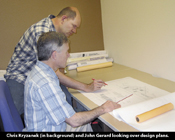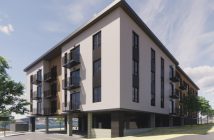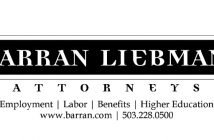
Comfort or Heartburn
A number of residential communities and business developments throughout Central Oregon subject their properties to a design review process based upon a set of guidelines establishing parameters relating to varying standards of aesthetics, construction quality and property maintenance.
Such standards are supplemental to jurisdictional codes and zoning ordinances. The purposes behind the establishment of a design review process include such goals as maintaining property value expectations, establishing a particular design theme, setting benchmark for consistency, and instituting standards for environmental stewardship.
There are many components which contribute to a successful design review process. First of all, whether a residential or commercial community, the developer should craft a clear and concise description of the vision for that community and the expectations from the perspectives of such as aesthetics, safety, etc.
The purpose of the design guideline document is to direct development in such a manner that the vision for the community is achieved as well as to ease process of achieving compliant design and construction results for the property owner.
From my experience, the best guidelines are simply and clearly stated, not overly verbose, and each topic addressed includes a definition of the purpose for the requirement or stipulation. The document should be intuitively organized so that specific topics can be easily located, and, where considered helpful, graphic exhibits in the form of drawings or photos should be incorporated to provide additional clarity. Accompanying a design guideline document should be a fine schedule and a prescribed process for notification of non-compliance and follow-thru.
As communities mature, and particularly after association hand-offs from developer to property owners take place, it maybe realized that due to any number of reasons, the original “vision” may need to be re-evaluated based upon the most current conditions. For this reason a regular periodic review of the guidelines supporting the community makes sense.
A thoughtfully conceived reviewing body is a critical element of a design review process. In the beginning the developer and a number of community members typically comprise the core of a design review committee, often along with a professional design consultant or consultants. When the services of professional design consultants are not enlisted, soliciting community committee members with some degree of design, construction, landscape and /or site development knowledge and experience should be a goal.
As for review meeting structures, a variety are represented within the Central Oregon area. Some review bodies invite applicants to attend the initial meeting of review; others permit applicants to attend follow-up meetings to address contested issues or to provide more detailed explanation regarding submitted material. A few communities’ meetings are regularly open to the community at large.
How these meetings are structured, organized and conducted is a major determinant in the duration of each review. When applicants have been invited to attend a review meeting, the process progresses more smoothly when committee members have previously studied the applicant’s submittal and the group has discussed the submittal in concert. An appeal process should be an option for any applicant. For the most satisfactory results, committee communications with applicants and other community property owners should be courteous in tone and helpful in content, yet firm and clear in regard to direction given and decisions rendered.
Trouble works its way into the design review process in situations such as:
• The intent of a guideline has not been clearly documented; as a result committees can make erroneous judgments due to a misunderstanding of the intended goal.
• Guidelines are vaguely defined, leaving committees to rely on surmise.
• Application reviews are not adequately in depth often requiring applicants to prepare re-submittals more times than should be necessary.
• Guidelines are not updated to address new materials, equipment, processes, etc. not considered in the development of the original document.
• The review committee conveys an adversarial tone to applicants.
• Behind the scenes individual committee members attempt to gain favors for friends through the approval of non-compliant conditions.
• Individual committee members hold a personal agenda above the community vision and the best interest of the association at large.
• Committees informally modify, add or delete guideline parameters without going through the process of modifying the design guidelines document.
• Committee members bring personal taste or preference into the review process.
• The property owner embraces the design guidelines and respects the design review process for others but believes that the restrictions do not however apply to him/her.
Many people believe that they should be able to do as they please in the development of their property. Although certainly a fair perspective, those individuals should definitely not become property owners within a design restricted community. Such pairings only lead to heartburn and unfulfilled dreams. So too for those that join design restricted communities with the intension of bucking the system.
Those interested in developing property within a community or development with design regulations should research the specific requirements, ask questions and ultimately determine whether or not the “vision” and everything that goes with it, will mesh with their needs and expectations.
Neal Huston, AIA, IIDA, ASID, LEED, AP, Neal Huston & Associates Architects Inc., ngh@nealhuston.com, www.nealhuston.com, 541-389-0991.





